Techniques
RwandaEQUIP teachers use a range of techniques in the classroom to engage, communicate and connect with their class. Some are taught and some are intuitive. In some schools and classrooms teachers are lucky to benefit from support but in others, they’re not. Our teacher training philosophy advocates the ‘big four’ teaching skills as core to successful teaching.
Check for understanding
RwandaEQUIP knows that training is most effective when it is either grade-specific or subject-specific, so RwandaEQUIP factors in both. RwandaEQUIP specialises its teacher training by grade and by subject in order to ensure that all teachers have the most effective training to enable them to succeed in their classrooms. RwandaEQUIP always follows the national curriculum. About ten percent of induction training is made up of training specially tailored to the grade level the teacher will be teaching—early childhood education, lower primary, or upper primary.
Upper-primary teachers are often further split up according to the subject they will be teaching so that they can learn the teaching techniques that will be most effective for their work. During practice time, teachers practice teaching using real teacher guides from the grades and subjects they will be teaching.
Wait time
On average a teacher will wait less than one second after asking a question before calling on a student to give an answer. RwandaEQUIP trains teachers to wait 3-4 seconds. This gives students precious ‘thinking time,’ which RwandaEQUIP calls ‘Wait time’. This is a simple technique with extraordinary results; students are more willing to participate and risk making a mistake.
Circulation
Circulation emphasizes the need to move around the classroom and ‘check in’ (verbally and nonverbally) with every student. It’s extremely important for teachers to check in on students during independent and group work. There is a significant difference in learning between a teacher reaching fifteen groups of students versus reaching zero in an independent practice session. By circulating, a teacher maximises their reach. Circulation as a core classroom practice also reminds the teacher that the act of teaching is not primarily at the front of the class, speaking in front of or writing on a board—as is often the case in low and middle-income countries. It’s being with students, observing and engaging with their own productive struggle to learn that matters.
Error analysis
This involves looking for the commonly occurring misconceptions or patterns of misunderstanding in a students’ piece of work. By understanding the precise nature of a common error, the teacher is better able to give feedback to a student or group of students. It helps teachers consider themselves responsible for student performance and understanding as well as encouraging students to understand the ‘why,’ not the ‘what‘, in a lesson.
Scan
This trains teachers to pause, look around the room, and pay attention to what children are doing in order to ensure all students are engaged in the lesson. This technique helps keep all students on task during a lesson and as a result, teachers are more in tune with the class as they deliver that lesson.
Cold calling
Student engagement in a lesson is key to learning. The idea of cold calling is simple: teachers use a cold call to call on any student, at any time. A core feature of it is unpredictability—because the teacher can call on anyone at any time. A cold call approach ensures that students should always be ready to share their questions, thoughts, and ideas. It helps create a more inclusive classroom as it ensures that everyone is part of the conversation.
Narrate the positive
Praise. It’s all about praise. Training teachers to name a student and highlight their good behaviour—or answer—works on the basis that a positive reinforcement toward one child inspires others. By attention, by name, being given only to positive and desirable behaviours, all students clearly understand the types of behaviours expected if positive attention is to be received.
These highlighted teaching techniques are specific, actionable and clear. They help teachers create a student-centred classroom and are positively associated with impact on learning outcomes. The techniques practised in synergy support teachers to excel.


